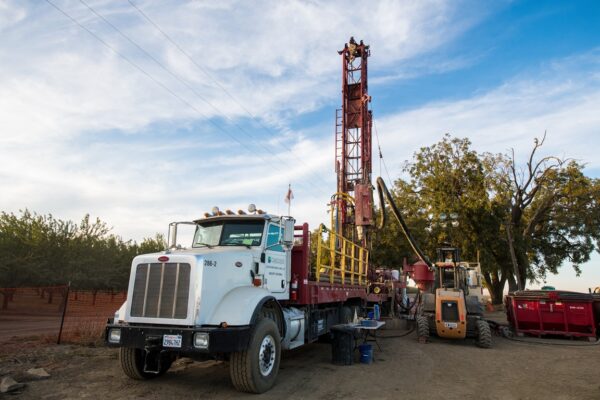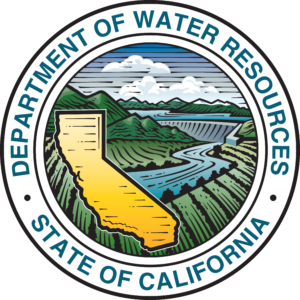
 From Stanford News:
From Stanford News:
The floor of California’s arid Central Valley is sinking as groundwater pumping for agriculture and drinking water depletes aquifers. A new remote sensing study from Stanford University shows land sinking – or subsidence – will likely continue for decades to centuries if underground water levels merely stop declining. To stop the sinking, water levels will need to rise.
“If you don’t get these water levels to come back up, then the land is going to sink, potentially tens of centimeters per year, for decades. But if they go up, you can get rewarded very quickly. You almost immediately improve the situation,” said Matthew Lees, a geophysics PhD student and lead author of the study, which appears June 2 in Water Resources Research.
Click here to continue reading at Stanford News.
 The Combined Well Standards, DWR Bulletin 74-81 and 74-90 are once again available for use. This web-based document was remediated to meet accessibility requirements.
The Combined Well Standards, DWR Bulletin 74-81 and 74-90 are once again available for use. This web-based document was remediated to meet accessibility requirements.
The publication is an informal compilation of Bulletin 74-81 and the draft supplemental, Bulletin 74-90. Although Bulletin 74-90 was not finalized by DWR nor officially adopted into the Model Well Ordinance by the State Water Resources Control Board, it has been adopted into local ordinances around the state.
To facilitate its use, DWR has combined the contents according to Table 1 (B74-90) of Bulletin 74-90 and made minor modifications in wording and formatting to improve readability.
DWR is no longer able to post the PDF versions of the original DWR Bulletin 74-81 and Bulletin 74-90 on their webpage since they do not meet accessibility standards. They are available on the Internet Archive: Bulletin 74-81 and Bulletin 74-90.
Until the Bulletin 74 Update is completed, DWR’s project team hopes these Combined Well Standards serve as a useful resource for you in your work. For questions or more information, email Bulletin74@water.ca.gov.
From the Department of Water Resources:
 The Department of Water Resources will be updating DWR Bulletin 74, California Well Standards and is convening a Technical Advisory Committee to guide the update.
The Department of Water Resources will be updating DWR Bulletin 74, California Well Standards and is convening a Technical Advisory Committee to guide the update.
Technical Advisory Committee
Committee members will represent a wide range of stakeholders and will convene from March 2021 to March 2022. The committee will break out in smaller groups to focus on specific topics. Those topics include the four well types included in the standards: Water, monitoring, cathodic protection, and geothermal heat exchange. DWR’s technical team will consider recommendations from the committee when updating the standards.
If you are interested in joining the committee, please email Sharon Hu, Kearns & West, at shu@kearnswest.com, by October 9, 2020. Kearns & West is collecting the candidate list for the committee on behalf of DWR.
Public Review Process
Once the standards have been updated, DWR will release a public review draft and will hold public workshops to collect and consider public comments before finalizing the standards. DWR will submit the final standards to the Water Boards for adoption into the Model Well Ordinance. Following submission, DWR will train well designers, installers, inspectors, and regulators in the updated standards.
Engagement Opportunities
You can get involved in the update of the well standards in the following ways:
From UC Davis Center for Regional Change:
“Studies estimate that 1.5 – 2.5 million Californians rely on domestic wells to meet their household water needs (Johnson and Belitz 2015; Dieter et al. 2018; Pace et al. 2020). But because domestic wells are often shallow, they are also often sensitive to changes in groundwater levels. As such, sustainable groundwater management has an important role to play in safeguarding the health and safety of residents and the achievement of California’s recognized Human Right to Water.
This report analyzes 41 Groundwater Sustainability Plans in 19 critical priority subbasins in California (in the San Joaquin Valley, Central California, and the Central Coast) to assess monitoring network coverage and the vulnerability of domestic wells to minimum thresholds (MTs), or the lowest groundwater level considered sustainable. … ”
From JD SUPRA:
“Key points in this legal brief:
-
-
- A permitting agency’s blanket designation of an entire category of permit decisions as ministerial for purposes of the California Environmental Quality Act (CEQA) may be held to be improper if the agency has the ability to modify or deny the permit based on any concern that may be examined under CEQA review.
- Courts will afford a larger degree of deference to an agency’s designation of a single permit decision as ministerial on a case-by-case basis.”
From the Modesto Bee:
“Stanislaus County will ask the state Supreme Court for a ruling on whether environmental review is a necessary step for a new water well.
In August, a state appeals court overturned the Stanislaus Superior Court’s decision in the Protecting Our Water lawsuit, which sought an injunction against county well permit approvals. The plaintiffs claimed the county was violating the California Environmental Quality Act (CEQA) in approving well permits without considering environmental harm. … “
Read more from the Modesto Bee here: Stanislaus County appeals ruling that would make it harder for farmers to dig wells




 The Department of Water Resources will be updating DWR Bulletin 74, California Well Standards and is convening a Technical Advisory Committee to guide the update.
The Department of Water Resources will be updating DWR Bulletin 74, California Well Standards and is convening a Technical Advisory Committee to guide the update.